
HOME
INTRO
SYMBOLS
ALMANAC
ECONOMY
GEOGRAPHY
STATE MAPS
PEOPLE
FORUM
NEWS
COOL SCHOOLS
STATE QUIZ
STATE LINKS
BOOK STORE
MARKETPLACE
NETSTATE.STORE
NETSTATE.MALL
GUESTBOOK
CONTACT US


Dbl click any word in
document for definition.
Texas State Shrub
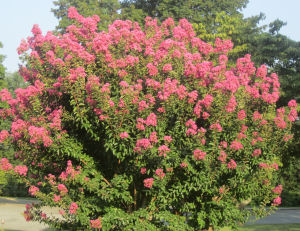
Texas State Shrub: Crape Myrtle
Photograph: © by Bill Hathorn, 2011.
Licensed under the Creative Commons
Attribution-Share Alike 3.0 Unported license.
House Concurrent Resolution No. 14 tells the story of crape myrtle and the State of Texas.
Brought to Paris, Texas in 1857 by the wife of General Sam Bell Maxey, the plant was easily absorbed into the Texas landscape. The beautiful blossoms it produced led to rapid deployment. As chronicled in the Resolution, many towns and counties, enamored with this Asian import, went the extra mile to welcome Lagerstroemia indica to the Lone Star State.
Along with the declaration of the official state shrub of Texas, House Concurrent Resolution No. 14 also highlights Lamar County as the Crape Myrtle County Capital and Paris, its county seat, as the Official Crape Myrtle City. Waxahachie is declared the Crape Myrtle Capital of Texas and Brazos County is recognized as an Official Crape Myrtle County.
H.C.R. No. 14
HOUSE CONCURRENT RESOLUTION
WHEREAS, The crape myrtle has been a distinctive part of the Texas landscape for more than 100 years, and this striking shrub never fails to add a touch of class and beauty to its surroundings; and
WHEREAS, Many Texans appreciate the splendor of the crape myrtle and have taken a special interest in its proliferation in their communities, making it difficult to traverse our great state without witnessing the plant's annual summer flush of color; and
WHEREAS, Originally imported from China, the crape myrtle, Lagerstroemia indica, has thrived in the Lone Star State's often brutal climate, and the establishment of these hardy hybrids has done much to encourage tourism for many Texas cities while also bolstering civic pride among their residents; and
WHEREAS, In 1857, the wife of Confederate General Sam Bell Maxey introduced the crape myrtle to Paris, Texas, and in 1916, after a fire devastated this Northeast Texas town, one of the community's first beautification projects incorporated these colorful shrubs; several years later, newspaper publisher A. G. "Pat" Mayse further established the city's link to the plant when he sold thousands of crape myrtle seedlings for 25 cents each as Paris's residents prepared to celebrate Texas' centennial; and
WHEREAS, More recently, citizens planted crape myrtles along the 18 mile stretch of highway between Paris and the Texas Oklahoma border; this prominent display provides a distinctive welcome to travelers entering the Lone Star State from the north and offers a memorable Texas farewell to those individuals who must leave the friendly confines of our state; and
WHEREAS, The crape myrtle enjoys an equally prominent position in the annals of Waxahachie, where the Crape Myrtle Council has endeavored to further beautify this lovely city with the addition of 2,000 crape myrtles; community volunteers have rallied together to assist in the planting and maintenance of the shrubs in a region that already boasts a profusion of these unique plants; and
WHEREAS, Throughout the town, dazzling blooms subtly accent the rustic charm of Waxahachie's elaborate Victorian style homes, framing these stunning structures in a springtime explosion of red, white, pink, and lavender and enticing visitors from across the country to visit this historic city; and
WHEREAS, The rich soil of Brazos County is especially suited for growing these exquisite plants, and their foliage provides a dramatic complement to the county's magnificent oaks for many months each year; reflecting their concern for the natural beauty and ecology of their community, members of Brazos Beautiful, Inc., have planted crape myrtles in parks and public areas to promote a cleaner, healthier, and more attractive environment; and
WHEREAS, The organization's tireless efforts have greatly enhanced College Station's Richard Carter Park, where visitors can stroll along paths dotted with more than 20 varieties of crape myrtle, delighting in their showy blossoms; gracing urban areas and parklands throughout Brazos County, the crape myrtle has come to symbolize the community's sense of self esteem and civic cooperation; and
WHEREAS, The history of the crape myrtle is indelibly linked to Lamar County and the city of Paris, and its unique relationship with both Waxahachie and Brazos County is also well known among Texans; the citizens of these communities and the many organizations within them are to be commended as they continue in their efforts to promote the propagation of this enchanting plant in Texas; now, therefore, be it
RESOLVED, That the 75th Legislature of the State of Texas hereby formally recognize the valuable addition of the crape myrtle to our native flora and declare the crape myrtle the Official State Shrub of Texas; and, be it further
RESOLVED, That Lamar County be declared the Crape Myrtle County Capital and that Paris, its county seat, be designated the Official Crape Myrtle City for their longtime association with the celebrated shrub; and, be it further
RESOLVED, That Waxahachie be declared the Crape Myrtle Capital of Texas and that Brazos County be recognized as an Official Crape Myrtle County for their communities' lasting contributions to the beautification of Texas.
Crape myrtle became the official state shrub of Texas when Governor George W. Bush signed House Concurrent Resolution No. 14 on June 18, 1997.
Eight years after the adoption of crape myrtle as the official state shrub of Texas, an Angleton botanist, concerned that crape myrtle wasn't a native of Texas, drove an effort to name an official state native shrub.
Texas Law
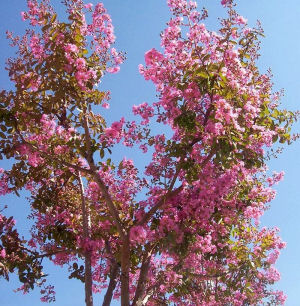
Texas State Shrub: Crape Myrtle
Photograph: ©2005 Luigi Rignanese

Crape myrtle was named the official shrub of the State of Texas by House Concurrent Resolution and is not, therefore, listed in the Texas Statutes.
Only a few of Texas' myriad symbols were actually adopted by an act of the legislature and written into the Texas Statutes.
Sources...
The State of Texas. Texas State Legislature. House Concurrent Resolution No. 14. Austin: The State of Texas, 1997. Web.
The State of Texas. Texas Legislature Online. Texas Statutes. Austin: Texas State Legislature, 1997. Web.
Shearer, Benjamin F. and Barbara S. State Names, Seals, Flags and Symbols: A Historical Guide Third Edition, Revised and Expanded. Westport, Conn: Greenwood Press, 3 Sub edition, 2001.
Additional Information
Lagerstroemia indica — Overview crapemyrtle: The Encyclopedia of Life.
PlantFiles: Crape Myrtle, Crepe Myrtle: Lagerstroemia indica: Dave's Garden, an Internet Brands Company.
Crape Myrtles for Texas: Collaborative project of Texas Cooperative Extension, Texas Agricultural Experiment Station, Texas A&M University, and the Texas Nursery and Landscape Association.
Lagerstroemia indica L. crapemyrtle: USDA, NRCS. 2012. The PLANTS Database (http://plants.usda.gov, 20 March 2012). National Plant Data Team, Greensboro, NC 27401-4901 USA.
Lagerstroemia indica - L., Crape Myrtle: A network connecting science with conservation - NatureServe Explorer: An Online Encyclopedia of Life.
Lagerstroemia indica L.: Integrated Taxonomic Information System (ITIS) Here you will find authoritative taxonomic information on plants, animals, fungi, and microbes of North America and the world.
More symbols & emblems: Complete list of official Texas state symbols from NETSTATE.COM.
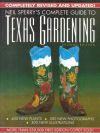
Neil Sperry's Complete
Guide to Texas Gardening
Neil Sperry's Complete Guide to Texas Gardening, by Neil Sperry. 400 pages. Publisher: Taylor Trade Publishing; 2nd Edition edition (April 1, 1991) This new, completely revised edition has over 500 new photographs, 400 new illustrations, 400 new plants and trees, the latest pest control recommendations, fruit and vegetable recommendations, new tips and plants specifically for Southern Texas, plus everything in the first edition.
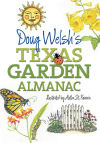
Doug Welsh's
Texas Garden Almanac
Doug Welsh's Texas Garden Almanac (Month-by-Month Guide), by Dr. Douglas F. Welsh Ph.D. 512 pages. Publisher: TAMU Press (October 25, 2007) Think of Doug Welsh’s Texas Garden Almanac as a giant monthly calendar for the entire state—a practical, information-packed, month-by-month guide for gardeners and “yardeners.” With nearly 20,000 copies sold and now in its second printing, this book provides everything you need to know about flowers and garden design; trees, shrubs, and vines; lawns; vegetable, herb, and fruit gardening; and also soil, mulch, water, pests, and plant care to create beautiful, productive, healthy gardens—and have fun doing it.
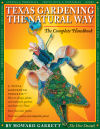
Texas Gardening
the Natural Way
Howard Garrett
Texas Gardening the Natural Way: The Complete Handbook, by Howard Garrett. 396 pages. Publisher: University of Texas Press (February 1, 2004) Compost your old "complete" gardening guide. There's a new way of gardening in Texas that's healthier for people and the environment, more effective at growing vigorous plants and reducing pests, cheaper to maintain, and just more fun. It's Howard Garrett's "The Natural Way" organic gardening program, and it's all here in Texas Gardening the Natural Way.
This book is the first complete, state-of-the-art organic gardening handbook for Texas. Using Howard Garrett's new mainstream gardening techniques, Texas Gardening the Natural Way presents a total gardening program.
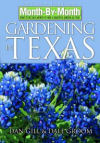
Month-by-Month
Gardening in Texas
Month-by-Month Gardening in Texas: Revised Edition: What to Do Each Month to Have a Beautiful Garden All Year, by Dan Gill and Dale Groom. 304 pages. Publisher: Thomas Nelson; Revised edition (February 14, 2006) The Month-by-Month series offer valuable advice on the proper timing of garden maintainance activities for each month. "Month-By-Month Gardening in Texas" is one of the first titles of the redesigned series from Cool Springs Press.
Top features include: 4-color photography and line-drawing illustrations to demonstrate cultural practices Covers all major plant categories Specific advice for every month of the year Updated edition includes text revisions, additional reference materials, and a new design.
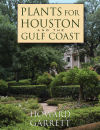
Plants for Houston
and the Gulf Coast
Howard Garrett
Plants for Houston and the Gulf Coast, by John Howard Garrett. 164 pages. Publisher: University of Texas Press; First Edition edition (March 15, 2008) Whether you're a first-time homeowner, dedicated gardener, or landscape professional, if you're gardening on the Gulf Coast, you need Howard Garrett's Plants for Houston and the Gulf Coast.
Garrett is one of Texas's top organic gardening experts, and gardeners rely on him for accurate, sensible advice about what to plant and how to maintain healthy yards and landscapes without synthetic fertilizers and toxic pesticides. In Plants for Houston and the Gulf Coast, Garrett presents nearly 400 plants, both native and adapted, that grow well in Southeast Texas.
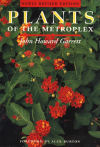
Plants
of the Metroplex
John Howard Garrett
Plants of the Metroplex: Newly Revised Edition, by John Howard Garrett. 96 pages. Publisher: University of Texas Press; Revised edition (1998) Covering Texas and beyond, Plants of the Metroplex is the only Texas book available giving practical landscape advice from a landscape architect's point of view.
John Howard Garrett uses his years of experience as a gardener, landscape contractor, maintenance contractor, and landscape architect to give you clear-cut, money-saving advice on the proper selection, installation, and maintenance of landscape plant material for the Dallas-Fort Worth Metroplex and beyond.
Garrett also explains his organic approach, "The Natural Way," which gives gardeners greater success with lower costs and without the risks of synthetic fertilizers and pesticides. All of this information has been revised and updated from Garrett's popular Plants of the Metroplex III.
Garrett has converted several commercial projects to organic programs. They include Frito-Lay National Headquarters in Plano, Johnson and Johnson Medical in Arlington, and Collin County Community College in Plano.

